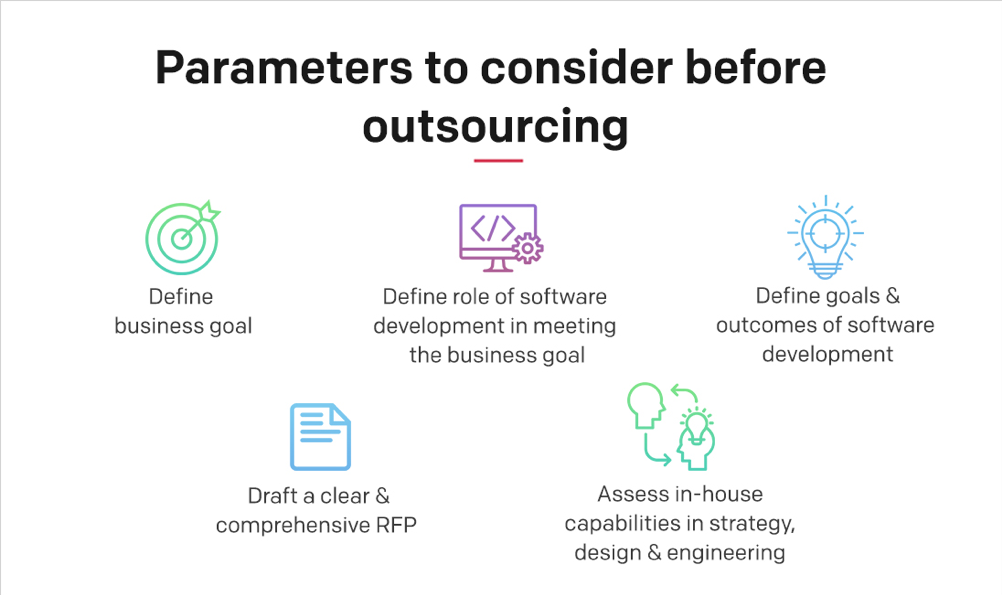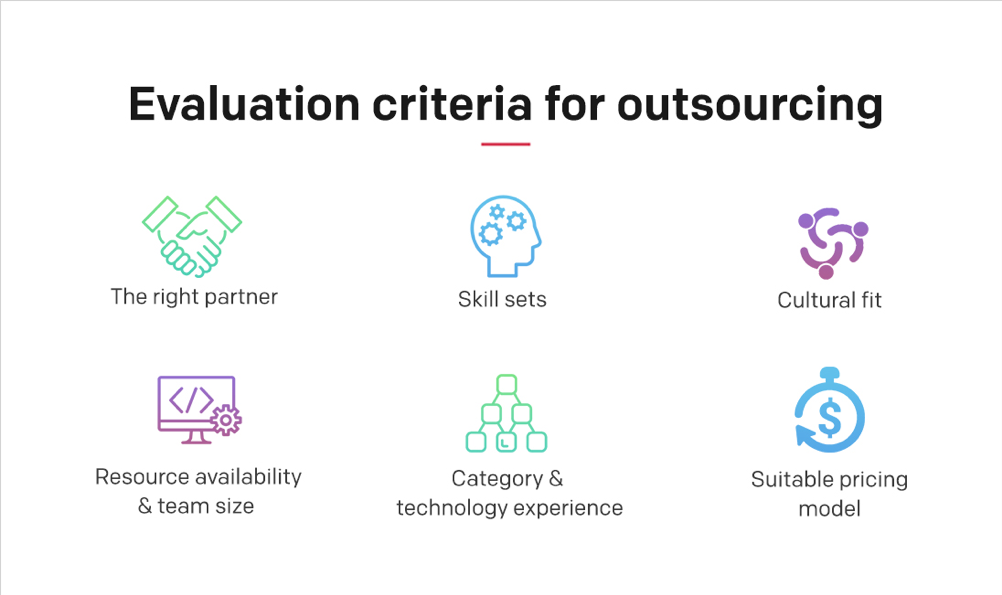

Updated December 18, 2024
In today’s competitive world, digital experiences are the new battlefront for enterprises. This article outlines why CXOs should consider outsourcing of strategy and software development pertaining to crafting such digital experiences and why it makes business sense.
In 1989, IBM created and managed a data center for Eastman Kodak defining what “IT services outsourcing” could look like.
Fast forward decade later, the business of outsourcing got a boost from the perceived threat of the “Y2K problem,” which stemmed from older computer programs not knowing how to interpret the double-digit year format after the year 1999 (e.g., does 00 represent 1900 or 2000?).
Looking for a Software Development agency?
Compare our list of top Software Development companies near you
During this time, businesses outsourced development work to reduce costs of getting their software updated in a timely manner.
During the next decade or so, outsourcing of IT services saw a movement up the value chain to include business-critical projects.
When mobile emerged as a critical platform, the focus switched from software development to app development and to some extent, the design of web and mobile platforms.
Now, the overload of digital content has people’s attention spread thin across multiple devices and platforms, and competition between businesses to keep consumers’ attention is more competitive than ever.
Digital hubs have emerged across the world to meet consumers’ growing demands, and while IT outsourcing encompasses many different industries, software development remains an important one.
In this article, we will focus on parameters which could help decision-makers determine whether they can benefit from outsourcing services.
Determine If Your Business Can Benefit From Outsourcing
Digital experiences are at the heart of almost every enterprise and are powered by customer insights and digital strategy.
For example, a battery-powered car is not built by traditional manufacturing and engineering skills – It takes design strategists, UI/UX experts, and a team of software developers to make it work. Additionally, it has a digital dashboard that stores crucial information and has millions of lines of code behind it.
Similarly, great customer service of an airline, hotel or any other service brand needs a digital strategy, user experience, and software engineering team to put it all together.
Traditional business models are being disrupted across domains. For example, there was a time when a bank competed with other bank brands only. Now, however, a traditional bank may compete with new-age Fintech players.
Additionally, new technologies and possibilities are always on the horizon. A few years ago, hailing a cab through a voice command in the living room would have been merely a sci-fi fantasy, and app developers would not have imagined how augmented reality could shape the customer experience.
We cannot predict which new technology or platform will emerge in the next few years.
To make sure they’re not left behind, businesses can either:
It’s not possible for every small business to factor in technological trends and create internal teams – To do this, the business would have to have an enormous budget.
Conversely, outsourcing also comes with its pros and cons, but the key concerns CXOs have regarding outsourcing have checks and balances.
Many companies have a different process for green-lighting and funding an internal project vs. an outsourced project.
When a company funds an external project there are often several layers or project approval from several groups with varying perspectives:
• IT
• Project management office (PMO)
• Finance
• Executives
Having the project pass through so many people allow you to find issues before the project kick-off such as insufficient budget, unrealistic timelines, and adoption and support issues.
This can help improve the chances of success.
For software development companies, finding the best most experienced resources is a requirement of the business. For in-house teams, the requirements are often lower.
Internal resources are often spread across multiple projects and responsibilities giving them less time to focus on a deliverable.
Outsourced projects often leverage dedicated resources.
So what parameters should CXOs consider in order to make a decision?

Before outsourcing, CXOs should:
By keeping these parameters in mind, business decision-makers can more confidently decide whether to outsource software development needs.
Having an in-house team come with perks, and there are many businesses that have successfully managed digital products with in-house teams.
Benefits of in-house development include:
By hiring an in-house team, businesses can feel secure knowing their development team in nearby if they need to discuss progress or needed changes.
In-house teams, however, also come with challenges, especially cost. These challenges include:
In-house teams can be expensive for businesses, especially small business, to build and maintain. Businesses need to consider the cost of hiring and ongoing trainings as technology evolves.
While the reasons for outsourcing may vary, the common thread is about extracting value.
Outsourcing is cost-effective, meaning it offers more value to businesses. Although this is one of the main reasons businesses choose to outsource, other benefits include:
Outsourcing services allow businesses to build entire teams or supplement their in-house teams with experts to “fill in” knowledge gaps.
Although it offers many benefits, outsourcing also comes with potential challenges such as:
Most of these challenges revolve around communication and can be resolved with expectation setting and regular check-ins.
If you opt for outsourcing, make sure you:
By preparing for the potential challenges of outsourcing, your business will be better equipped to handle and overcome communication barriers so that they don’t get in the way of progress.
Not every outsourced partner will be a right fit for your business and development needs.
For this reason, it’s important to have a list of criteria to evaluate potential partners.

Ask yourself:
By understanding your business’s development needs and goals, you’ll be better suited to determine which of your processes should be outsourced.
Customer experience is the new battlefront for enterprises and the “design” and the development of such experiences matters for success.
It is nearly impossible for all businesses to hire and manage such diverse talent needs in-house. Therefore, outsourcing such services in part or whole with a long-term view makes sense for enterprises, especially small businesses.
At Robosoft, we believe in simplifying lives through delightful digital experiences. Across enterprises, digital product owners and IT Services teams are responsible for initiating, overseeing and executing mission-critical software projects. All of these involve decision making which can impact the success of the project – from selecting the right digital partner to writing a comprehensive RFP.


